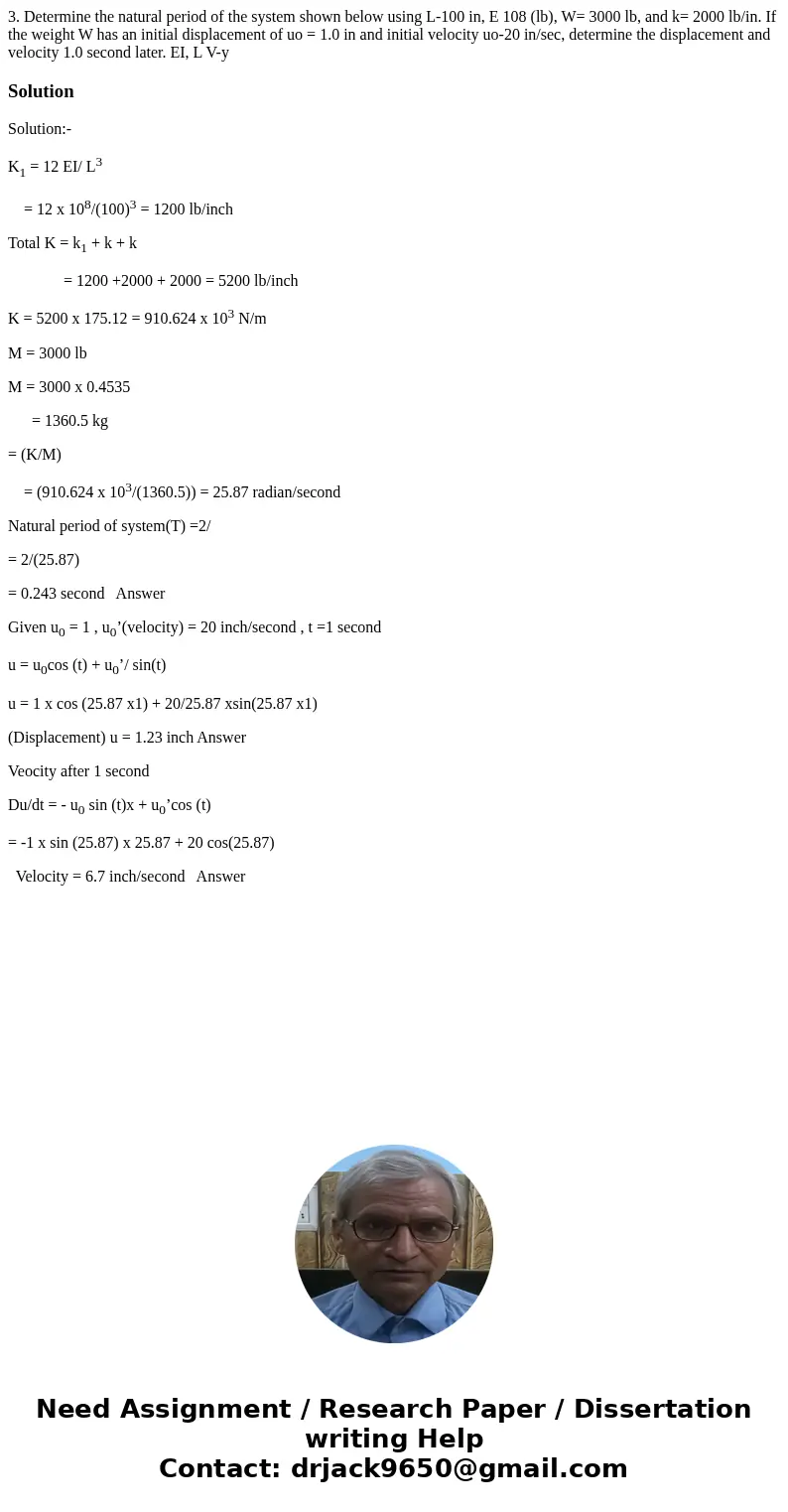3 Determine the natural period of the system shown below usi
3. Determine the natural period of the system shown below using L-100 in, E 108 (lb), W= 3000 lb, and k= 2000 lb/in. If the weight W has an initial displacement of uo = 1.0 in and initial velocity uo-20 in/sec, determine the displacement and velocity 1.0 second later. EI, L V-y 
Solution
Solution:-
K1 = 12 EI/ L3
= 12 x 108/(100)3 = 1200 lb/inch
Total K = k1 + k + k
= 1200 +2000 + 2000 = 5200 lb/inch
K = 5200 x 175.12 = 910.624 x 103 N/m
M = 3000 lb
M = 3000 x 0.4535
= 1360.5 kg
= (K/M)
= (910.624 x 103/(1360.5)) = 25.87 radian/second
Natural period of system(T) =2/
= 2/(25.87)
= 0.243 second Answer
Given u0 = 1 , u0’(velocity) = 20 inch/second , t =1 second
u = u0cos (t) + u0’/ sin(t)
u = 1 x cos (25.87 x1) + 20/25.87 xsin(25.87 x1)
(Displacement) u = 1.23 inch Answer
Veocity after 1 second
Du/dt = - u0 sin (t)x + u0’cos (t)
= -1 x sin (25.87) x 25.87 + 20 cos(25.87)
Velocity = 6.7 inch/second Answer

 Homework Sourse
Homework Sourse